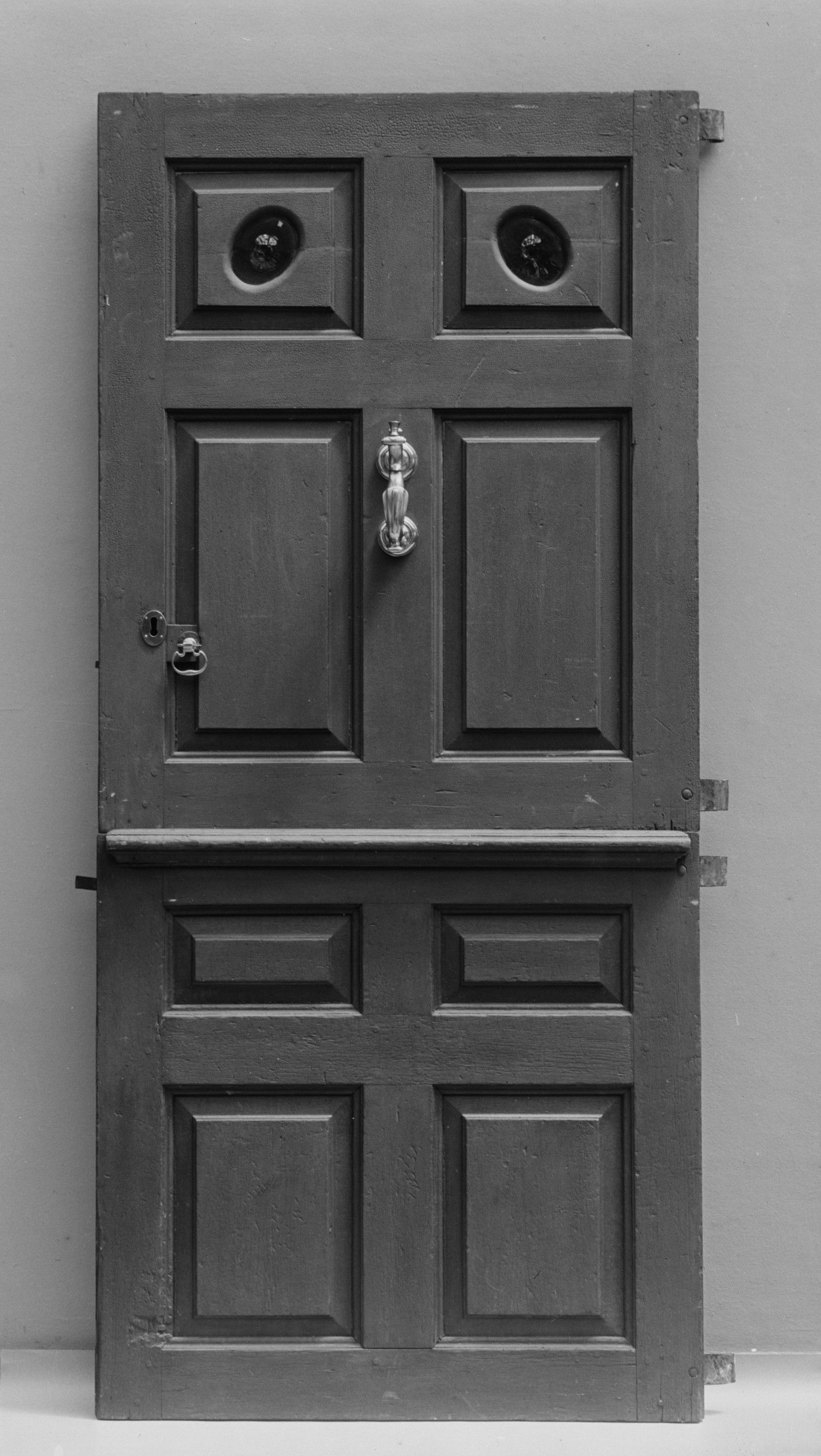Exterior Door from Dr. Stephen Thorn House, New Hackensack, New York
Not on view
From the house of Dr. Stephen Thorn of New Hackensack in Dutchess County, New York, this "Dutch" door is typical of the exterior doors found in pre-Revolutionary houses from the Dutch cultural areas of New York and New Jersey. Two-part split doors of this type are indigenous to the Netherlands and appear frequently in seventeenth-century Dutch genre paintings depicting interiors. The fact that the upper section could be opened independently of the lower one afforded the homeowner the advantage of letting air and light into the interior while keeping children safely inside and animals and vermin out. Early houses in the Dutch cultural areas of New York and New Jersey were typically of two rooms arranged end to end under a steeply pitched roof, and lacked a center hall. To allow for privacy and heat retention, each of these rooms had an exterior "Dutch" door. Even after the adoption of the gambrel-roofed English style center hall house in the Hudson River valley in the 1750s, people of Dutch descent retained this earlier door type. This pattern of retaining certain traditional forms was typical of the New York Dutch and can be seen as well in their extended use of that quintessential Dutch furniture form, the kast. The door features eight fielded panels, the topmost pair pierced by oval lights of green "bull's-eye" glass. The front of the door is made of gumwood. The back is made of oak and the boards run diagonally, constructed with tongue-and-groove joints. The brass hardware and iron strap hinges are thought to be original.
Due to rights restrictions, this image cannot be enlarged, viewed at full screen, or downloaded.
This artwork is meant to be viewed from right to left. Scroll left to view more.




